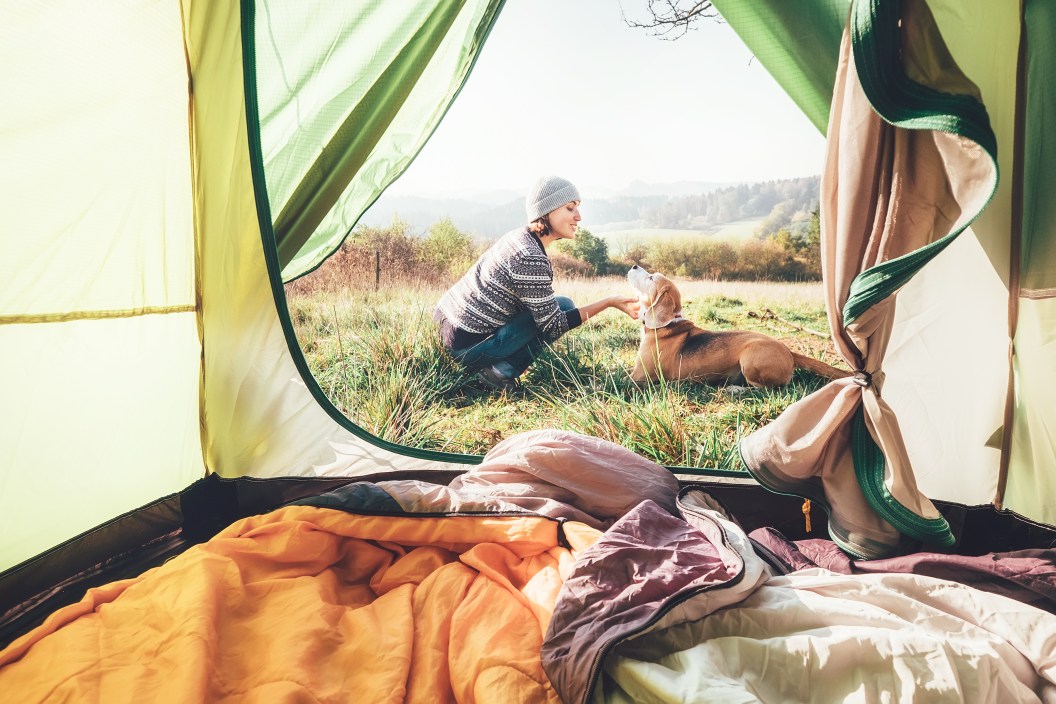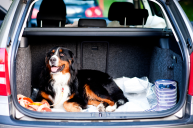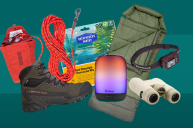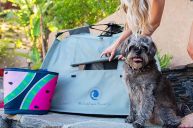For any pet lover, dogs make camping trips better with their unbounded excitement and curiosity. They bring comfort to camp and peace of mind for owners, knowing their furry friends won't be stuck with some lame sitter thinking of recreating Homeward Bound. Plus, many dogs love camping as much as their humans do and plenty of national parks are dog-friendly.
However, dogs come with their own baggage...baggage for you to buy, pack, and carry for them. They require you to plan more, too, just in case something happens.
How to Plan for Camping with a Dog
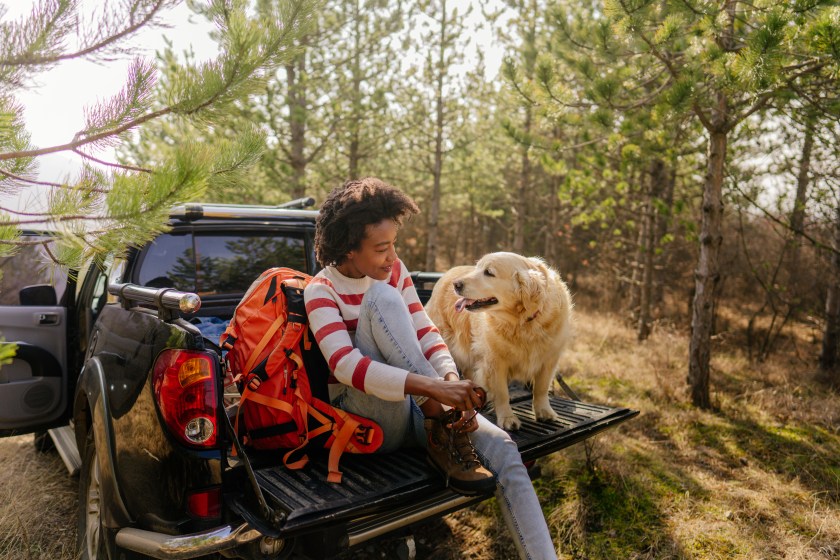
Getty Images, AleksandarNakic
This guide will take you through the essential gear and advice you'll need for camping with your dog. Before you jump in, though, know that this list is absolutely dependent on what climates, environments, terrains, and seasons you will be heading out with your dog. It may also depend on your dog, and its size, experience, health needs, and temperament. A city dog going into the mountains, for example, may have a more challenging time hiking on granite than a dog who lives in the mountains and plays on granite frequently.
The gear you bring will also depend on what type of camping you're doing, namely backpacking into your campsite versus car camping. Your pup probably won't need its own dog hiking backpack if you're pulling up to camp in a car (although they do look cute in them). If you're in the backcountry and your dog has excellent recall—especially to wildlife like ground squirrels and bears—you may not want to keep them on a leash the whole time, but if you are in a campground next to others, it might be required to have all pets leashed.
Before your next adventure, get your furry friend's travel bag ready with the following gear and prep yourself with dog safety and comfort tips below.
1. Food and Water Bowls
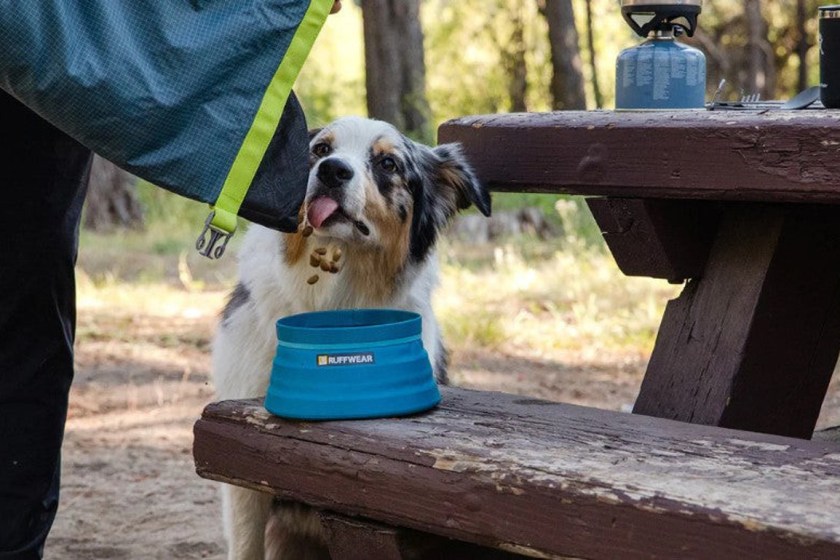
Ruffwear
Just like wondering which camping meal you should plan for yourself, dog bowls and food storage are the first thing to consider for your pup, too. A bowl from home is perfectly fine for car camping, but if you're backpacking, a foldable dog bowl like these super-compact bowls from PetAmi is much more convenient because you can cinch it to save leftover kibble, and it rolls down for easy storage.
For shorter trips, a gallon zip-top bag can work perfectly fine for food, but for longer trips or to eliminate plastic, a waterproof dog food container like the Kurgo Kibble Carrier is a good choice. With it, you can carry up to 5 pounds of food, and it has a kibble-oil-seepage-proof liner.
2. A Collar and Tracker
Even calm dogs and ones with great recall can take off after a squirrel or get spooked and hide somewhere. A GPS tracker gives you peace of mind (even for dogs with great recall). Apple's AirTags only really work in populated areas with good service, so instead, go with an option like the Jiobit GPS system, which uses a combination of 5G cellular, GPS, Bluetooth, and WiFi to connect and track your pooch in real-time.
Don't want to invest in a tracker? At the very least, you should have a tag on your dog's collar with your phone number and address on it, so if your dog is taken to a local pound, they can contact you.
A light-up collar will also help you see your pup if it gets loose at night. They seem gimmicky, but they're actually great to minimize having to worry about where Fido is once it gets dark out. Look for a waterproof option that has a long-range light, like the one from Blazin.
3. A Sleep System
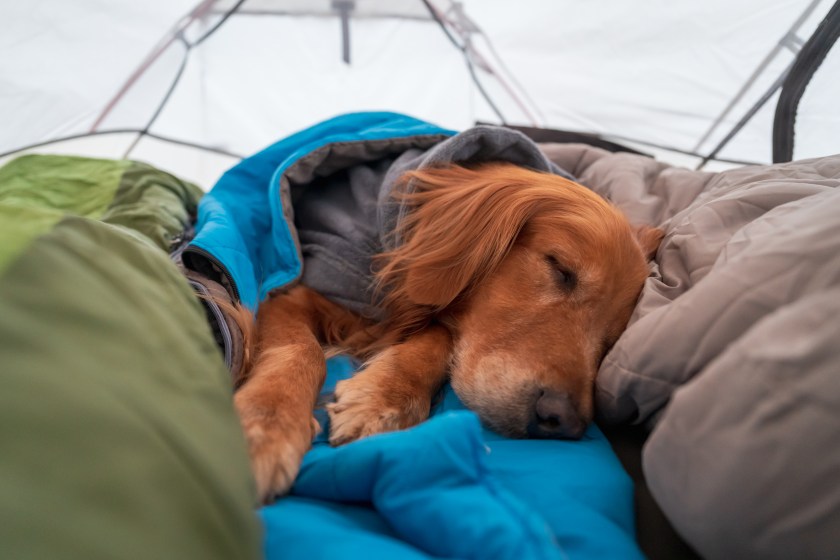
Getty Images, chendongshan
Dogs need a place to sleep, too. Yes, they can definitely sleep on the ground (they are a dog after all), but putting a basic blanket or other form of cushioning under their joints can make for a little luxury under the stars. And if camping in shoulder season, your dog probably needs a blanket or sleeping bag for cold nights, just like you do.
If you really want to treat the princess, give them a pad like the Ruffwear Highlands Dog Pad with your personal puffy laid over them to sleep.
However, some dogs might find it more comfortable and comforting to have something like the Ruffwear Highlands Sleeping Bag, which many reviewers claim their dogs love enough to use at home, too. It even integrates with the Highlands pad for colder nights, making it a reliable year-round option.
Make sure whatever setup you choose is water-resistant, easy to clean, puncture-proof—dog nails and inflatable pads don't mix well—and packable for the type of trips you plan on doing.
4. A Dog First Aid Kit
Your personal first aid kit might be missing important items to help your dog if injured outdoors. Remember: You can't apply a Band-Aid to a dog's cut paw pad.
To build a dog first aid kit, make sure you include items like 3% hydrogen peroxide (to induce vomiting should they get into something toxic), non-stinging antiseptic like chlorhexidine (to clean wounds), a rescue harness (like Fido Pro Airlift Emergency Dog Rescue Sling), Benadryl or generic diphenhydramine (make sure you know the correct dose ahead of time), gauze, elastic bandage, and tweezers (especially in tick country). Options like the Rayco 45-piece pet first aid kit have all of the above, plus other camping essentials like an LED collar and a collapsible water bowl.
5. Paw Protection
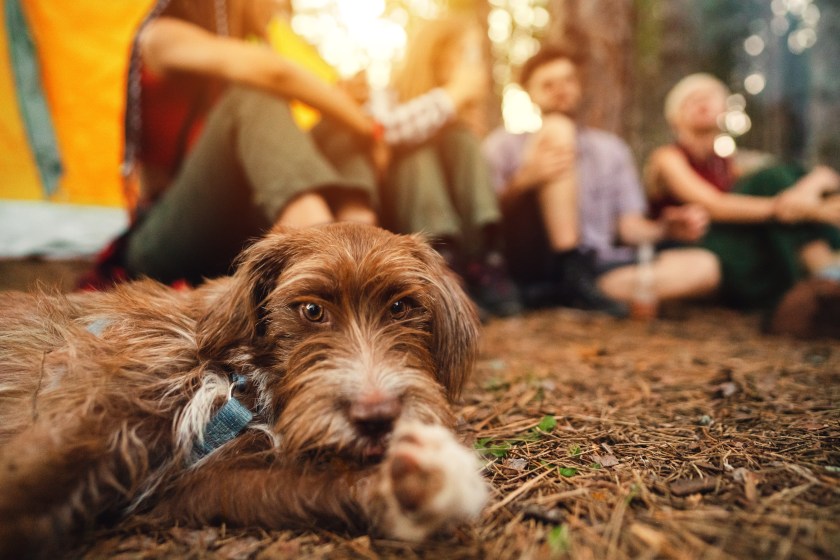
Getty Images, SrdjanPav
Depending on the terrain and activities you plan on doing, dog booties are a valuable tool for keeping your dog's feet injury-free. Granite, snow, sharp rocks, hot sand, and more can tear up your dog's paws. Options like the Bark Brite All-Weather Reflective Neoprene Dog Boots can save their paws from sores, cuts, and broken nails.
You can also bring along Musher's Secret Dog Paw Wax, which "acts as an invisible boot," adding a protective barrier to your dog's paw. It's also soothing on their snouts, ears, and other sensitive areas.
6. A Dedicated Dog Towel
A towel is not only useful for dogs who like to dip, but also if your pup gets injured, wrapping them in a towel will help control them and make them more comfortable. A towel can also double as a camp blanket at night or as a way to apply pressure and stop the bleeding to a severe wound. We definitely recommend bringing one along just for your dog (it's no fun trying to dry your body off with a dog hair-covered towel). A simple microfiber one like the REI Co-Op Multi Towel Lite works well.
7. A Long Leash
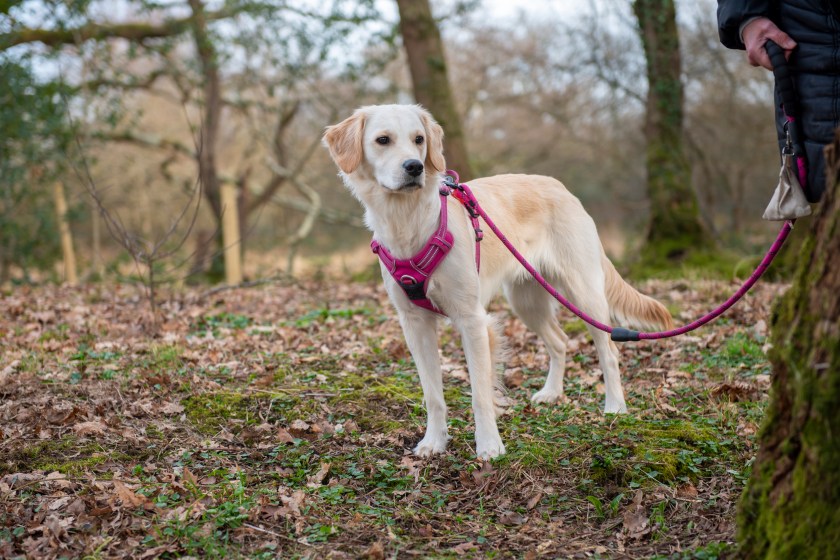
Getty Images, StephM2506
For car camping, especially at large and populated campgrounds, having a system like the Ruffwear Knot-a-Hitch to keep your dog tied up safely in camp is a must-have. This system can be strung between two trees or secured to a single post, allowing your dog to roam without getting tangled or potentially up-turning the picnic table. A dog harness is recommended for this setup to reduce the chances of choking.
8. Poop Bags—and Lots of Them
Don't go anywhere without poop bags so you can Leave No Trace. Dog poop doesn't belong on trails or in campgrounds—it's as simple as that.
READ MORE: Yes, Dogs Really Do Need to Be On Leash While Hiking
